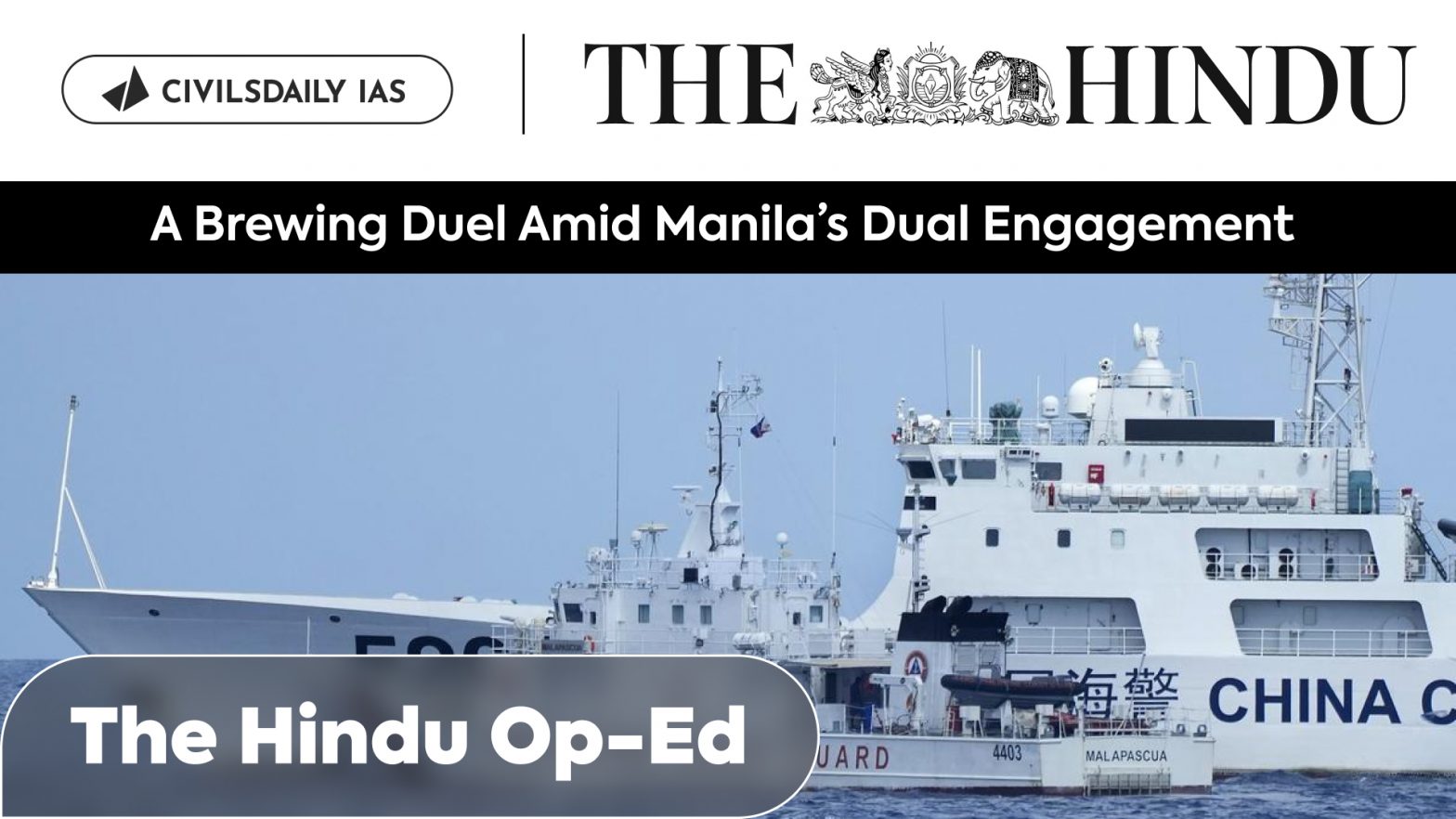| PYQ Relevance: Mains: Q) With respect to the South China sea, maritime territorial disputes and rising tension affaire the need for safeguarding maritime security to ensure freedom of navigation and ever flight throughout the region. In this context, discuss the bilateral issues between India and China. (UPSC IAS/2014) Q) Quadrilateral Security Dialogue (Quad) is transforming itself into a trade bloc from a military alliance, in present times Discuss. (UPSC IAS/2020) Q) The new tri-nation partnership AUKUS is aimed at countering China’s ambitions in the Indo-Pacific region. Is it going to supersede the existing partnerships in the region? Discuss the strength and impact of AUKUS in the present scenario. (UPSC IAS/2021) |
Note4Students:
Prelims: QUAD countries; South China Sea;
Mains: Regional Security and Institutions; QUAD countries; South China Sea;
Mentor comment: There is growing anti-China sentiment in India, with 84% of Indians believing they “cannot trust China” and 59% believing “India should go to war with China over the border conflict. There is also growing sentiment of anti-Chinese feeling in several Southeast Asian countries, driven by a mix of historical prejudices, economic resentment, and concerns over China’s growing regional influence.
Under President Marcos Jr., the Philippines is taking a more assertive stance against China’s actions in the South China Sea, in contrast to the previous administration’s conciliatory approach. However, the Philippines remains economically reliant on China, creating a “dual engagement” that may become difficult to maintain as tensions rise.
Today’s Article suggests that the Philippines under Marcos Jr. is poised for a more confrontational approach towards China, with significant implications for regional security and the country’s complex relationships with both the US and China.
Let’s learn!
__
Why in the news?
Ferdinand Marcos Jr. (affectionately known as “Bongbong”) is leading the Philippines with a more assertive stance compared to his predecessor, Rodrigo Duterte.
Background:
- US-Philippines Relationship: The relationship has seen an upswing since Marcos Jr.’s election victory in 2022, marking the return of the Marcos family to Malacañang Palace.
- Tensions in the South China Sea: Tensions have increased due to territorial disputes and competing claims.
- Images of the Chinese maritime militia using water cannons against Philippine fishing boats raised tensions in the region.
- Marcos Jr. sharply criticized China’s actions in the South China Sea at the Shangri-La Dialogue in Singapore.
- China views Marcos Jr. as an American lackey, bent on inviting chaos and conflict in the region.
American stakes in the Philippines
- Historical Context:
- The Philippines’ strategic location in the South China Sea makes it an indispensable actor in the U.S.’s Indo-Pacific strategy to counter China.
- The U.S. has a Mutual Defense Treaty with the Philippines dating back to 1951, but is cautious about getting entangled in a naval battle with China, its peer competitor
- The U.S. has around 400,000 American citizens, including many military veterans, residing there.
Leveraging support from Quad partners: Mr. Marcos Jr. is leveraging support from Quad partners (India, Australia, Japan, U.S.) to transform the Philippines’ military forces.
- India: India delivered BrahMos missile launchers and missiles to the Philippines in a $374.96 million deal.
- India supports the 2016 Tribunal ruling against China’s actions in the Philippines’ exclusive economic zone, which China ignored.
- Japan: Japan provided $4 million worth of coastal surveillance radars to the Philippine Navy and pledged to fund 7 more patrol ships.
- Japan’s assistance aims to help the Philippine Coast Guard focus on military missions rather than enforcing the EEZ.
- Australia: South Korea is also approached for coast guard vessel development, and Australia is the Philippines’ second largest bilateral grant aid donor.
- Despite preparing to confront China, the Philippines remains reliant on China’s $9.1 billion in financial support to previous administrations.
- USA: It is uncertain how long the Philippines can maintain this dual engagement with the U.S. and China, as Marcos Jr.’s friction with China is likely to affect Beijing’s financial flows.
| What role do Quad partners play in the Philippines’ strategy against China? • Enhanced Defense Cooperation: President Ferdinand Marcos Jr. has granted US troops expanded access to Philippine bases under the Enhanced Defense Cooperation Agreement (EDCA) and negotiated new defense deals with Japan. • Joint Military Exercises: The Philippines conducts joint military exercises with the US, Japan, and Australia, focusing on potential contingencies in the South China Sea and Taiwan. These exercises aim to improve military interoperability and enhance the Philippines’ ability to respond to Chinese coercion. • Maritime Security: Australia and the Philippines have agreed to conduct joint maritime patrols across the South China Sea, which will help monitor and counter Chinese maritime activities. This cooperation is seen as a significant deterrent to Chinese aggression. |
Conclusion: The Philippines is part of a new quadrilateral grouping, dubbed the “Squad,” which includes the US, Japan, Australia, and the Philippines. This grouping aims to enhance military interoperability and address the challenges posed by China’s expansive military activities in the region.

